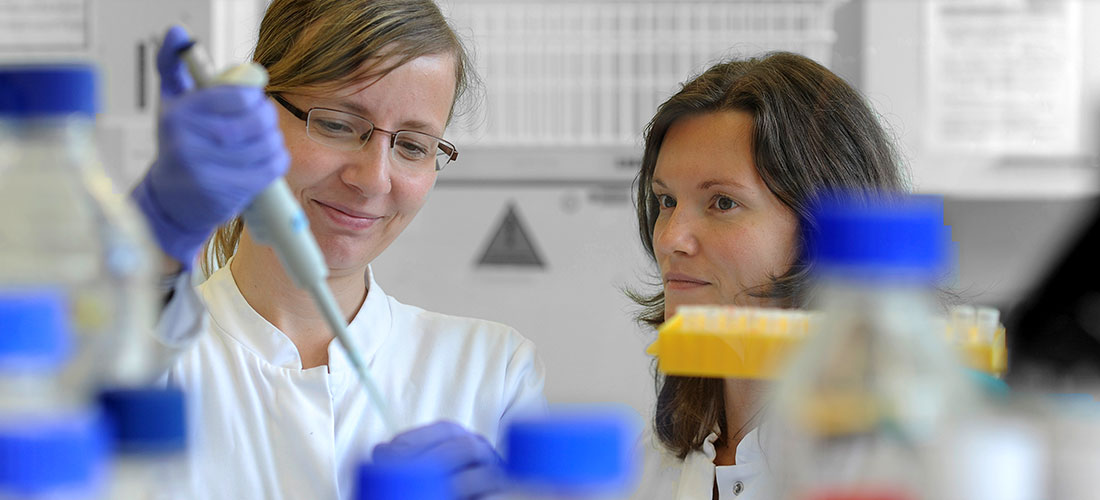B01: The role of chromosome topology in MYCN function and neuroblastoma evolution and its potential for clinical exploitation
MYCN amplification is the driving mutation in a subset of neuroblastoma patients with poor prognosis. Targeting the MYCN oncoprotein for tumor therapy is, however, hampered by an unclear view of its critical oncogenic function and the lack of small molecule inhibitors that target this function. MYCN is a nuclear protein exhibiting many properties of a transcription factor. Surprisingly, its effects on the basal transcriptional machinery are not associated with changes in downstream gene expression, but rather enable RNA polymerases to cope with transcriptional obstacles such as double-strand breaks and approaching replication forks. To do so, MYCN recruits the exosome complex, a 3'-5' RNA exonuclease, to MYCN chromatin binding sites during S phase, and recruitment terminates transcription by RNA polymerase II (RNAPII) when a replication fork approaches. Project B01 builds on two of our recent observations. Firstly, we determined that MYCN nuclear protein complex formation is controlled by MYCN association with nascent mRNAs, which are exosome complex substrates, potentially facilitating recruitment of factors that expel RNA polymerase from chromatin when it encounters an obstacle (“stalls”). Secondly, we found that a critical mechanism by which MYCN facilitates DNA repair at promoters is to remove stalled RNAPII complexes from condensate-like compartments in which active transcription takes place. To this end, MYCN binds the TFIIIC protein complex. TFIIIC is both an architectural protein and a transcription termination factor. TFIIIC binding to MYCN is limited by direct competition with the aurora kinase A (AURKA) for MYCN binding. Homeostasis between these MYCN‑containing complexes could enable neuronal neuroblastoma progenitors to cope with transcription-associated stress. We hypothesize that these mechanisms facilitate neuroblastoma cell proliferation under suboptimal conditions (e.g. during metastasis) and the emergence of resistance in response to chemotherapy, accelerating neuroblastoma evolution. Thus, B01 aims to test the dependence of MYCN-amplified neuroblastoma growth and evolutionary chemoresistance on the function of TFIIIC and the exosome complex. To achieve this, TFIIIC will be silenced by shRNA in a transgenic mouse model (Task 1) and the structural exosome complex subunit, EXOSC5, will be depleted via an auxin‑inducible degron in an orthotopic mouse transplant model (Task 2). The TFIIIC/AURKA equilibrium will also be perturbed by PROTAC-mediated AURKA degradation (Task 3) as a first step towards clinical exploitation by potentially opening a new therapeutic window to treat patients with relapsed MYCN-amplified neuroblastoma.
PhD positions and place of work: 2
1 wet-lab (PI Martin Eilers, University Würzburg)
1 wet-lab (PI Dimitrios Papadopoulos, University Würzburg)



